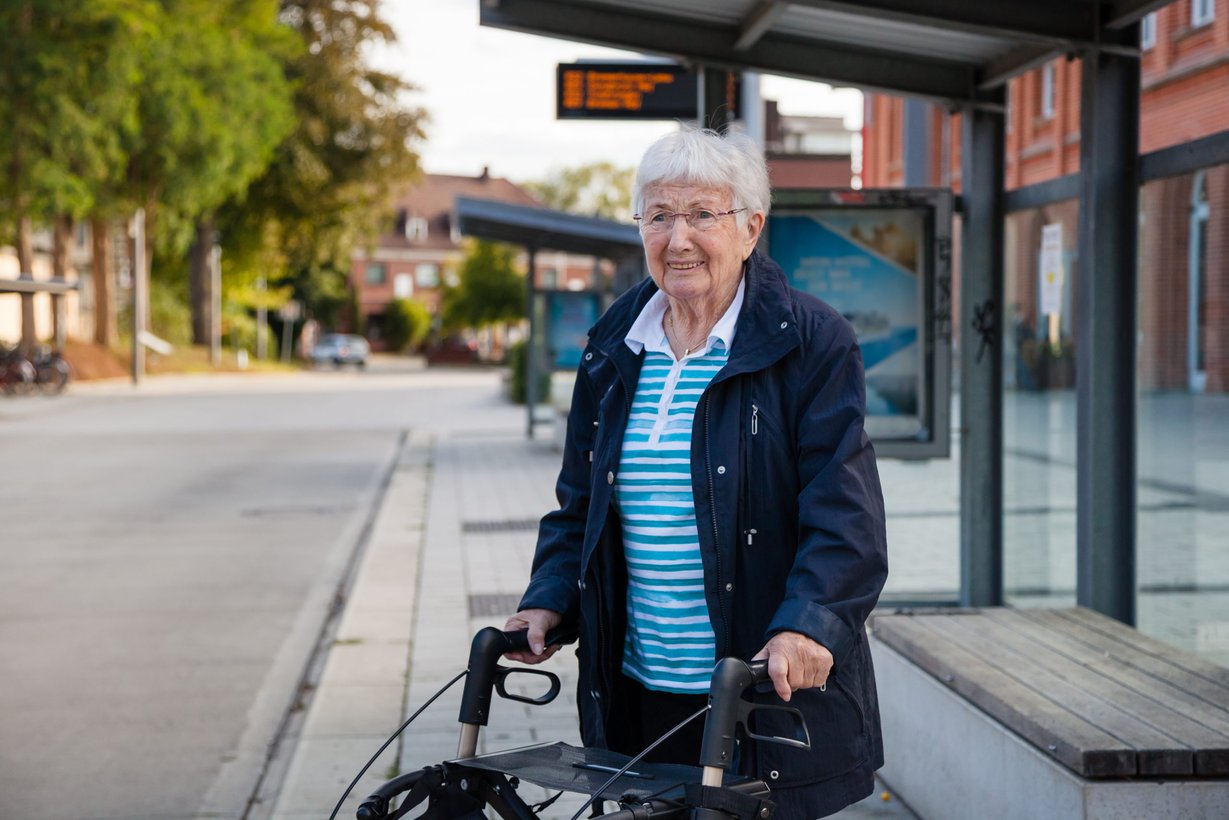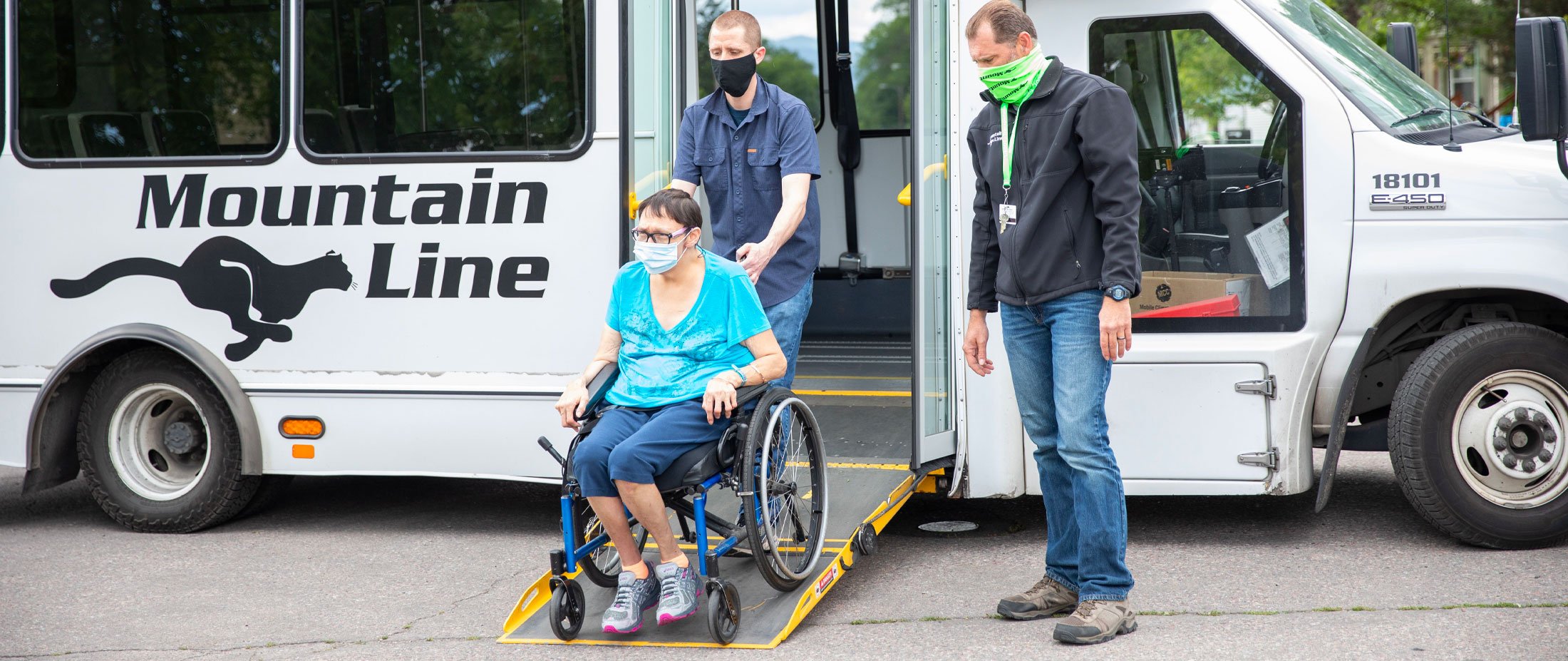The public transportation industry has undergone dramatic changes in the wake of COVID-19. More cities and agencies have looked to technology to overhaul the transit experience, whether that’s offering contact-free payment options or replacing underperforming fixed-route buses with flexible on-demand transit.
Now some transit agencies are looking to use these same kinds of technologies to improve the transit experience for their paratransit riders. “There’s been a recent transformation happening within public transportation where more cities and transit agencies are exploring on-demand microtransit, and now we’re starting to see similar interest in the paratransit sector,” said Alex Lavoie, Global Head of Operations at Via. “Updating outdated paratransit has unfortunately not yet been a priority for many transit agencies. It needs a tech revolution.” With intelligent routing algorithms, location tracking, and detailed service planning, some transit agencies are applying microtransit technology to offer increasingly affordable and accessible paratransit while improving common issues like unnecessarily long waits, unreasonably long trips, and high operating costs.
A number of cities and transit agencies have already applied microtransit technology to their outdated paratransit programs, and results are proving to be immensely promising.
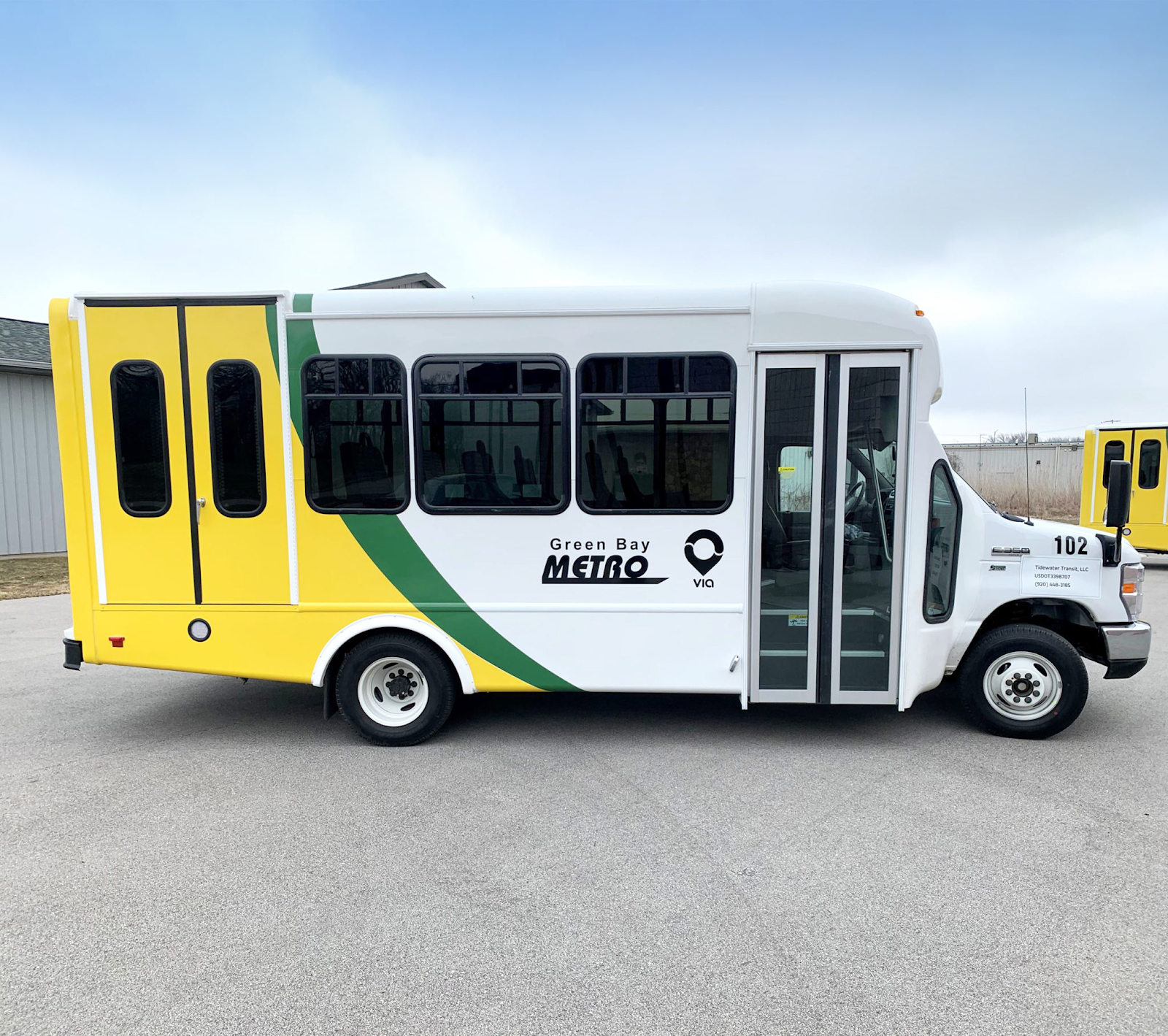
1. Paratransit in Wisconsin.
For years, paratransit riders in Green Bay, Wisconsin, encountered difficulties getting around town. Transportation challenges like poor visibility into booked rides, vehicle locations, and ETAs took away flexibility for riders and caregivers using public transportation. In hope of bringing more riders to public transportation and providing services tailored to their diverse needs, transit leaders in Green Bay decided to upgrade their previously underperforming paratransit network. In April 2020, Green Bay Metro (GBM) partnered with Via to launch a turnkey paratransit service with a tech-enabled solution. Via undertook full operation of Green Bay’s paratransit system, providing the technology, vehicles, daily management, and customer support.
The new service allows riders to book in-app or through a web portal, getting real-time updates about vehicle locations and arrival times. They can also call a live dispatcher and receive trip statuses with automated calls and SMS.
Within just three months, GBM Paratransit significantly improved mobility for paratransit riders, reaching 97% on-time performance. With improved booking windows and shorter travel times, this service provides new freedom for residents in need of wheelchair-accessible vehicles.
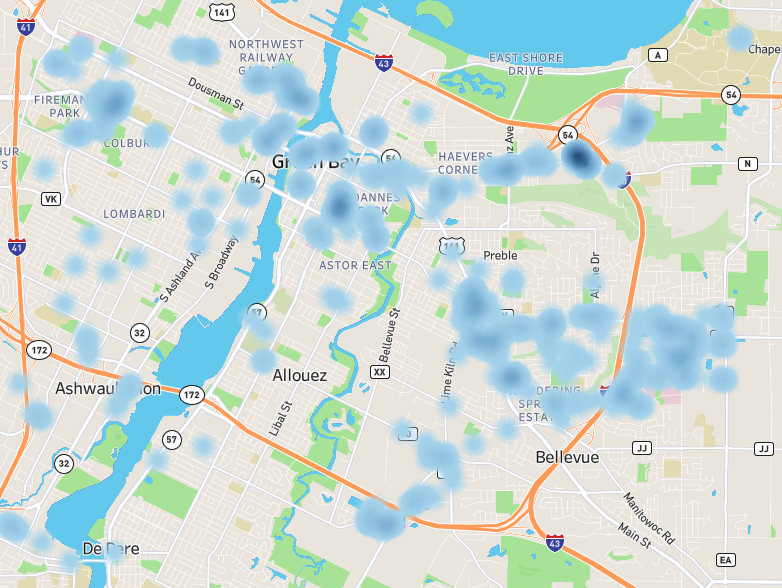 Demand density heat map indicating popular destinations in Green Bay.
Demand density heat map indicating popular destinations in Green Bay.
The technology deployed for GBM’s paratransit service was so successful that the agency decided to launch a microtransit option, GBM On-Demand, to replace underperforming fixed routes with convenient and affordable shared rides for all residents. Notably, vehicle dispatchers and operators use a fully integrated backend system for both transit modes and, through fleet commingling, serve microtransit and paratransit trips with the same 12 vehicles.
READ: Rider Profile: Meet the Paratransit Riders of Green Bay, Wis.
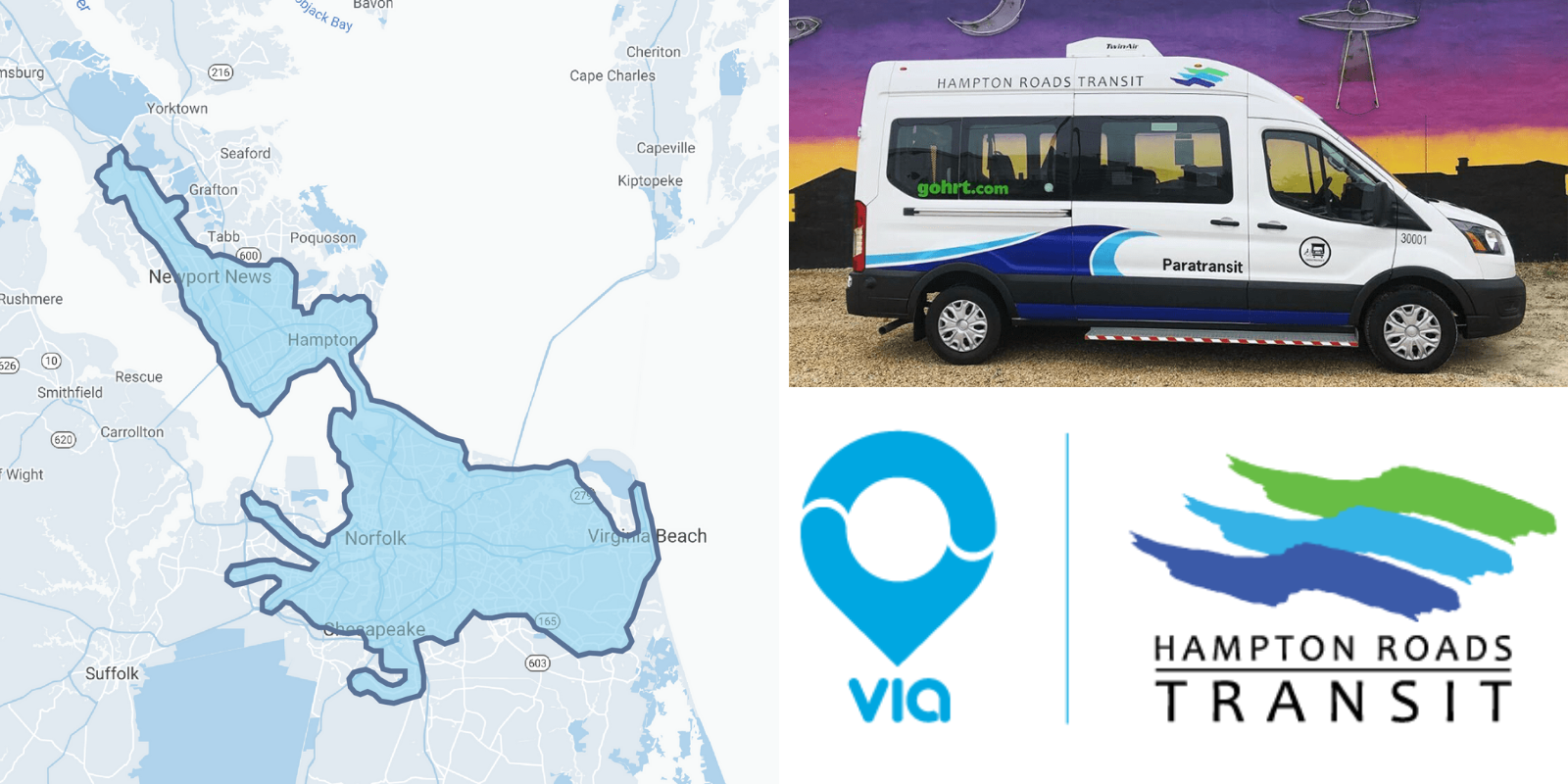
2. Overhauling a massive network in Virginia.
Although Hampton Roads Transit (HRT) was already operating a robust paratransit service, local leadership was looking for new solutions to eliminate many of the most common complaints from customers: uncertain vehicle arrival times, long or circuitous routes, and lack of same-day scheduling flexibility, all while improving inefficiencies and reducing operational costs.
HRT’s existing service was accessible to both ambulatory and non-ambulatory customers and operated with a mixed fleet of sedans and wheelchair-accessible cutaway vans. Ambulatory customers were frequently also accommodated by local taxi operators.
In order to overhaul operations, HRT invested in Via's ADA-compliant technology, which optimized vehicle usage while providing riders with as much flexibility as possible, allowing for pre-scheduled trips with plans to gradually introduce riders to new on-demand trip planning technology. The vision: more efficient driver routing and dispatching will lead to both a better rider experience as well as higher vehicle utilization, resulting in lower operational costs.
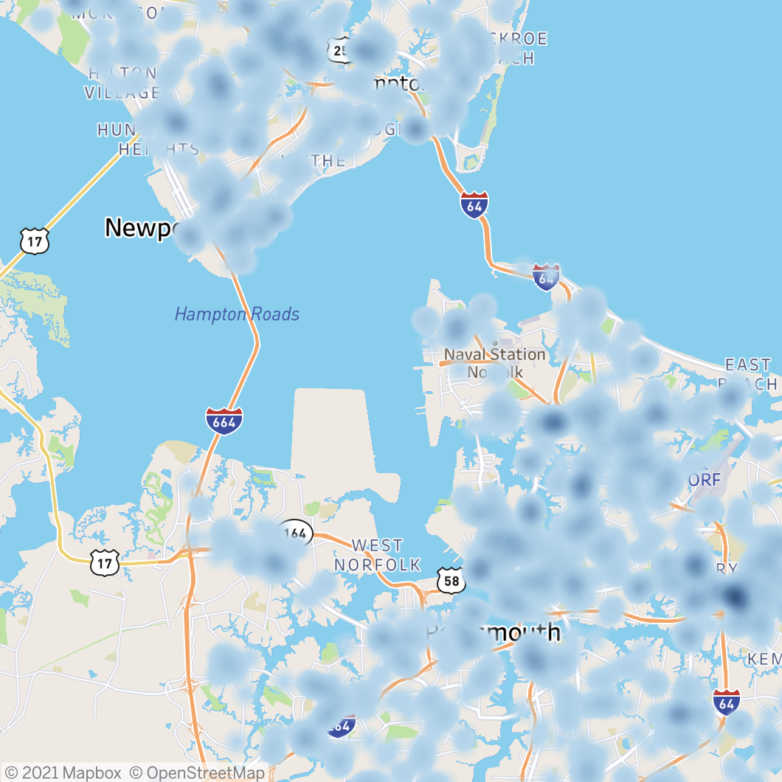 Demand density heat map indicating popular destinations in Hampton Roads.
Demand density heat map indicating popular destinations in Hampton Roads.
HRT’s transition to a technology-powered solution was not without challenges. The agency’s network covers almost 400 square miles across six cities, and is bisected by a large waterway that is crossed by only two bridges and a tunnel – all of which can be plagued by heavy traffic during rush hours. The area’s major employer, the U.S. Military, operates several bases within the service area, each with varying access and security requirements.
Beyond these operational challenges, HRT’s legacy paratransit service enjoyed strong ridership. Users knew their booking operator by name; they recognized the routes that took them to their weekly appointments. These comforts in the legacy service made the transition to a new operator a challenge. But, within two months of launch, the new service enjoyed lower call-in wait times, fewer late pickups, and an improved rider experience — a strong testament to the adaptability of the new technology HRT began using to modernize its paratransit service.
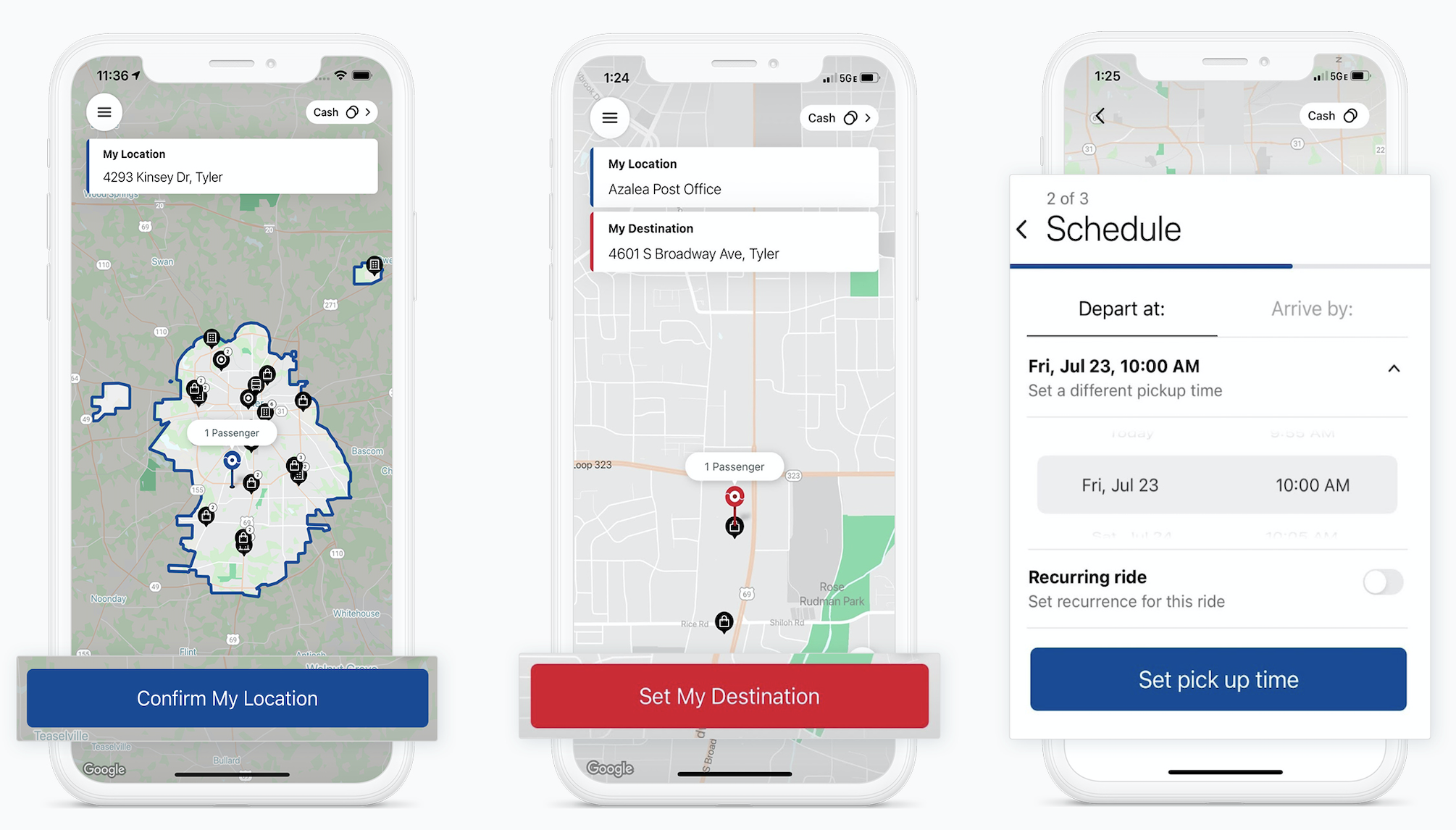
3. Updating paratransit service in Montana.
In April 2022, Mountain Line — the transit agency serving Missoula, Montana — brought Via’s software onboard to improve the efficiency and upgrade the rider experience of its ADA paratransit and senior shuttle services. Mountain Line staff are thrilled to have made the switch from a manual, labor-intensive scheduling and dispatch process to a smooth, tech-assisted experience. Riders experienced no service disruption during the transition — Via’s team migrated all rider accounts directly into the new system — and can now book and track their trips through a mobile app or web portal, increasing transparency and reducing the volume of calls to dispatch.
The new software has helped Mountain Line’s fleet of 16 vehicles serve their trips more efficiently: vehicle productivity has increased by 16% over the first six months of service. And 18% more riders are now using the system overall, reflecting the improved rider experience.
Paratransit’s need for a revolution.
As more cities rethink their public transportation operations in light of the COVID-19 pandemic, the future of paratransit is also hanging in the balance. Cities are already embracing on-demand technology to optimize fixed-route bus networks, meaning it’s time to turn to similar technology to update paratransit. With on-demand technology, cities and transit agencies can give seniors and individuals with disabilities a new sense of independence — as well as increase the potential for more efficient operations and lower costs for agencies, cities, and taxpayers. While the days of old-school paratransit may swiftly be coming to an end, transit leaders in Wisconsin, Virginia, and Texas prove that the future is bright.
